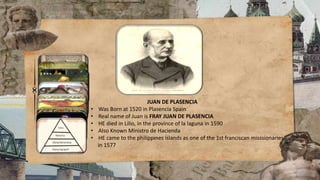The Duchess de Plasencia, Doña María de Gracia de Solís-Beaumont y Téllez-Girón, passed away on February 20, 2021, at the age of sixty-three in Madrid. Her life was marked by her dedication to service, particularly as a nurse with the Spanish Red Cross and her membership in the Sovereign Military Order of Malta and the Constantinian Order of Saint George.
As a second cousin once removed of the late Duchess de Medinaceli, Doña María de Gracia was deeply rooted in Spanish nobility. Born on March 12, 1957, she was the younger daughter of Don Pedro de Solís-Beaumont y Lasso de Vega and Doña Angela María Téllez-Girón. Her marriage to Don Carlo Ruspoli, Duca di Morignano, in 1975 produced a daughter, Doña María de Gracia Ruspoli y Solís-Beaumont, who went on to have two children of her own. The Duchess de Plasencia’s life was a testament to her commitment to family and her noble heritage.
what were the key contributions of the Duchess de Plasencia to the Spanish Red Cross

what specific roles did the Duchess de Plasencia hold within the Spanish Red Cross

what inspired the Duchess de Plasencia to become a nurse with the Spanish Red Cross
 |
| La Duquesa de Plasencia. |
 |
| Don Carlo Ruspoli, Duca di Morignano, and Doña María da Gracia de Solís-Beaumount y Téllez-Girón, Duquesa de Plasencia. |
On 20 February 2021, Doña María de Gracia, Duchess de Plasencia died at Madrid. She was sixty-three years-old. The duchess had been a nurse with the Spanish Red Cross and was a Dame of the Sovereign Military Order of Malta as well as of the Constantinian Order of Saint George. María de Gracia was a second cousin once removed of Doña Victoria Eugenia Fernández de Córdoba, Duchess de Medinaceli (1917-2013).
 |
| The wedding of the Duchess de Osuna and Don Pedro de Solís-Beaumont, 1946. |
 |
| Doña Angela, Duchess de Osuna, with her daughters Doña María de Gracia, Duchess de Plasencia, and Doña Angela, Duchess de Arcos. |
Doña María de Gracia de Solís-Beaumont y Téllez-Girón was born at Madrid on 12 March 1957. She was the younger daughter of Don Pedro de Solís-Beaumont y Lasso de Vega (1916-1959) and Doña Angela María Téllez-Girón y Duque de Estrada, Duchess de Osuna, etc. (1925-2015), who married in 1946. María de Gracia had one older sister: Doña Angela de Solis-Beaumont y Téllez-Girón, Duchess de Arcos (b.1950). In 1963, María de Gracia’s mother remarried Don José Maria de Latorre y Montalvo (1925-1991). From this marriage, María de Gracia had two half-sisters: Doña María del Pilar de Latorre y Téllez-Girón, Duchess de Uceda (b.1965), and Doña María de la Asunción de Latorre y Téllez-Girón Montalvo, Duchess de Medina de Rioseco (b.1968).
 |
| The Duchess de Plasencia with her mother the Duchess de Osuna. Photograph (c) Don Carlo Ruspoli. |
On 11 October 1975, Doña María de Gracia de Solís-Beaumont y Téllez-Girón married Don Carlo Ruspoli, Duca di Morignano (b.1949). The Duke di Morignano and the Duchess de Plasencia had one child: Doña María de Gracia Ruspoli y Solís-Beaumont (b.Madrid 16 June 1977), Marquesa del Villar de Grajanejos. On 28 November 2009, the Marchioness del Villar de Grajanejos married Don Javier Isidro González de Gregorio y Molina (b.Madrid 7 November 1971). Doña María de Gracia and Don Javier have two children: Doña María de Gracia González de Gregorio y Ruspoli (b.2015) and Doña Blanca Micaela González de Gregorio y Ruspoli (b.2018).
 |
| The Duchess de Plasencia and the Duke di Morignano. |
what were the Duchess de Plasencia’s most significant achievements
The Duchess de Plasencia, Doña María de Gracia de Solís-Beaumont y Téllez-Girón, left behind a legacy of service and nobility that will be remembered for generations to come. Her dedication to the Spanish Red Cross and her membership in the Sovereign Military Order of Malta and the Constantinian Order of Saint George are testaments to her commitment to helping others and upholding the values of her noble heritage. As a second cousin once removed of the late Duchess de Medinaceli, Doña María de Gracia was deeply rooted in Spanish nobility and her life was marked by her strong sense of duty and compassion for those in need. Her marriage to Don Carlo Ruspoli, Duca di Morignano, in 1975 produced a daughter, Doña María de Gracia Ruspoli y Solís-Beaumont, who went on to have two children of her own. The Duchess de Plasencia’s life was a testament to her commitment to family and her noble heritage, and her passing on February 20, 2021, at the age of sixty-three, is a loss felt by all who knew her.
As we reflect on the life of the Duchess de Plasencia, we are reminded of the importance of service and nobility in our own lives. Her dedication to the Spanish Red Cross and her membership in the Sovereign Military Order of Malta and the Constantinian Order of Saint George are inspiring examples of how we can make a positive impact on the world around us. The Duchess de Plasencia’s life was marked by her strong sense of duty and compassion for those in need, and her passing is a reminder to us all to continue her work in our own way. Whether through service to others or upholding the values of our noble heritage, we can all strive to make a difference in the world, just as the Duchess de Plasencia did. May her memory be a blessing to us all, and may we continue to be inspired by her example of service and nobility.




